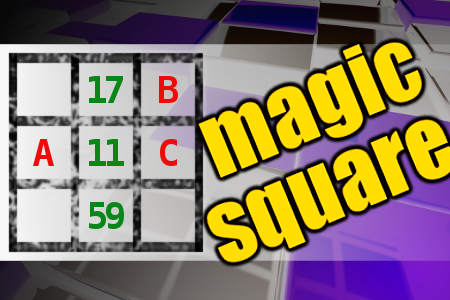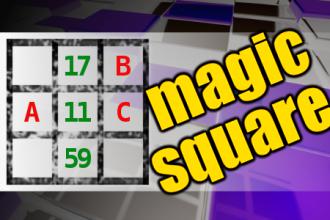MAGIC SQUARE: Calculate A+B-C
The aim is to place the some numbers from the list (7, 10, 11, 12, 15, 16, 17, 59, 60, 61) into the empty squares and squares marked with A, B an C. Sum of each row and column should be equal. All the numbers of the magic square must be different. Find values for A, B, and C. Solution is A+B-C.Correct answers: 11
The first user who solved this task is Nasrin 24 T.
#brainteasers #math #magicsquare


